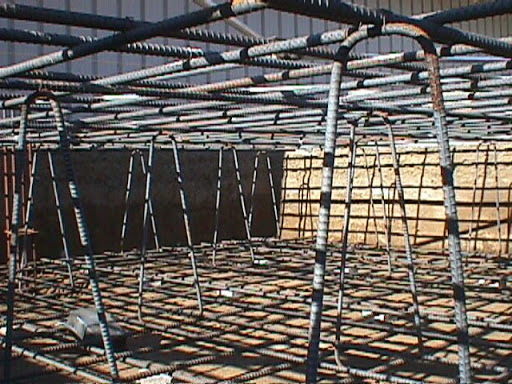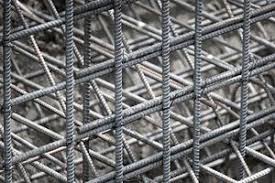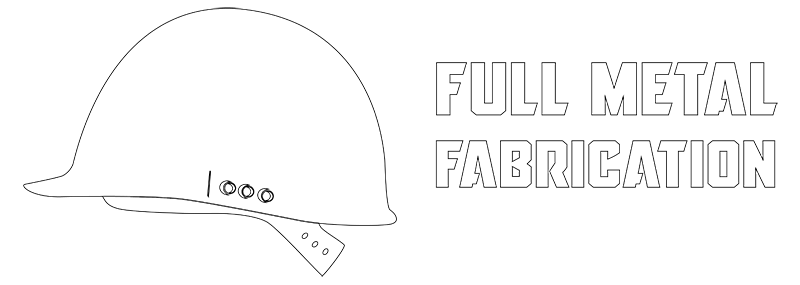Rebar Specifications and Information
Production of Rebar
The production of rebar involves a multi-step process. It begins with melting steel scrap in a furnace to create molten steel, which is then purified and alloyed with elements like carbon, manganese, or vanadium to enhance its strength. This steel is cast into long billets and subjected to hot rolling, where the billets are heated and rolled to achieve the desired diameter. Surface patterns are then added to improve adherence to concrete. Finally, the rebar is precisely cut to length and bent according to specific requirements. 
Rebar, essential for reinforcing concrete in construction, is made from various materials. The most common is carbon steel, valued for its strength and flexibility. Stainless steel rebar, though more expensive, is preferred in harsh environments due to its corrosion resistance. Galvanized steel, which is carbon steel coated with zinc, and epoxy-coated steel are also used for their anti-corrosive properties. Additionally, composite materials like Glass-Fiber-Reinforced-Polymer (GFRP) are employed, providing corrosion resistance and a lighter weight, albeit with different strength characteristics than steel.
Types of Rebar
Reinforced rebar comes in various types to suit different construction needs. Carbon Steel Rebar, the most common type, is widely used for concrete reinforcement. Welded Wire Fabric (WWF) features wires welded together, ideal for flatwork. Epoxy-Coated Rebar, with its corrosion-resistant epoxy coating, is used in water-exposed or harsh environments. Galvanized Rebar offers corrosion resistance through its zinc coating, while Stainless Steel Rebar provides the highest corrosion resistance. Glass-Fiber-Reinforced-Polymer (GFRP) is a non-corrosive fiberglass alternative for environments unsuitable for metal. Lastly, European Rebar, made of manganese, offers a different strength profile compared to carbon steel rebar. Each type is tailored to balance cost, strength, and environmental suitability.
Specifications and Quality Control for Rebar
Quality control for rebar encompasses a comprehensive set of measures to ensure safety and performance standards. This includes material testing to verify the steel's chemical composition and tensile strength testing to assess its resistance to tension. Bend tests check the rebar's flexibility and ductility, while dimensional checks ensure the diameters and lengths meet specified standards. Surface inspections confirm the accuracy of deformation patterns, and corrosion resistance tests are conducted for coated rebar types. Collectively, these controls guarantee that the rebar adheres to essential standards for construction applications.
Rebar compliance and industry standards are critical for ensuring its quality, strength, and durability in construction projects, and these vary by region. In the United States, the American Society for Testing and Materials (ASTM) sets standards such as ASTM A615 for carbon steel rebar. In the United Kingdom, the British Standards (BS) provide guidelines like BS 4449. Globally, the International Standards Organization (ISO) offers standards, including ISO 6935, for steel used in concrete reinforcement. These standardized regulations are crucial to maintain consistency, safety, and reliability in the use of rebar across various construction applications.
Rebar in Construction Projects
Rebar is a fundamental component in construction, primarily used to reinforce concrete and enhance its tensile strength. While concrete is strong under compression, it is weak in tension, and rebar compensates for this. It's integral in the construction of building foundations, walls, columns, and in infrastructure like roads and bridges. Rebar is also used in concrete slabs and flooring to prevent cracking and in retaining walls to provide support against lateral earth pressures. During construction, rebar is bent and shaped as required, placed in molds, and concrete is poured around it, solidifying to form a robust structure.
Customization of Sizes and Shapes
 In the manufacturing of rebar, while the fundamental process remains consistent, several unique techniques are employed to enhance its properties for specific construction needs. Microalloying involves adding trace elements like vanadium or niobium to the steel to improve its strength and ductility, tailoring it for more demanding applications. The Quenching and Self-Tempering (QST) process rapidly cools and then reheats the rebar, creating a product with a tough exterior and a ductile core, providing both strength and flexibility. Additionally, applying an epoxy coating to the rebar adds a layer of protection, significantly enhancing its resistance to corrosion. These specialized techniques ensure that the rebar meets the diverse and specific requirements of various construction projects.
In the manufacturing of rebar, while the fundamental process remains consistent, several unique techniques are employed to enhance its properties for specific construction needs. Microalloying involves adding trace elements like vanadium or niobium to the steel to improve its strength and ductility, tailoring it for more demanding applications. The Quenching and Self-Tempering (QST) process rapidly cools and then reheats the rebar, creating a product with a tough exterior and a ductile core, providing both strength and flexibility. Additionally, applying an epoxy coating to the rebar adds a layer of protection, significantly enhancing its resistance to corrosion. These specialized techniques ensure that the rebar meets the diverse and specific requirements of various construction projects.
FAQs
Case Studies/Project Examples
- Showcase past projects
Pricing and Ordering Information
- Provide pricing details, ordering process, bulk order discounts
